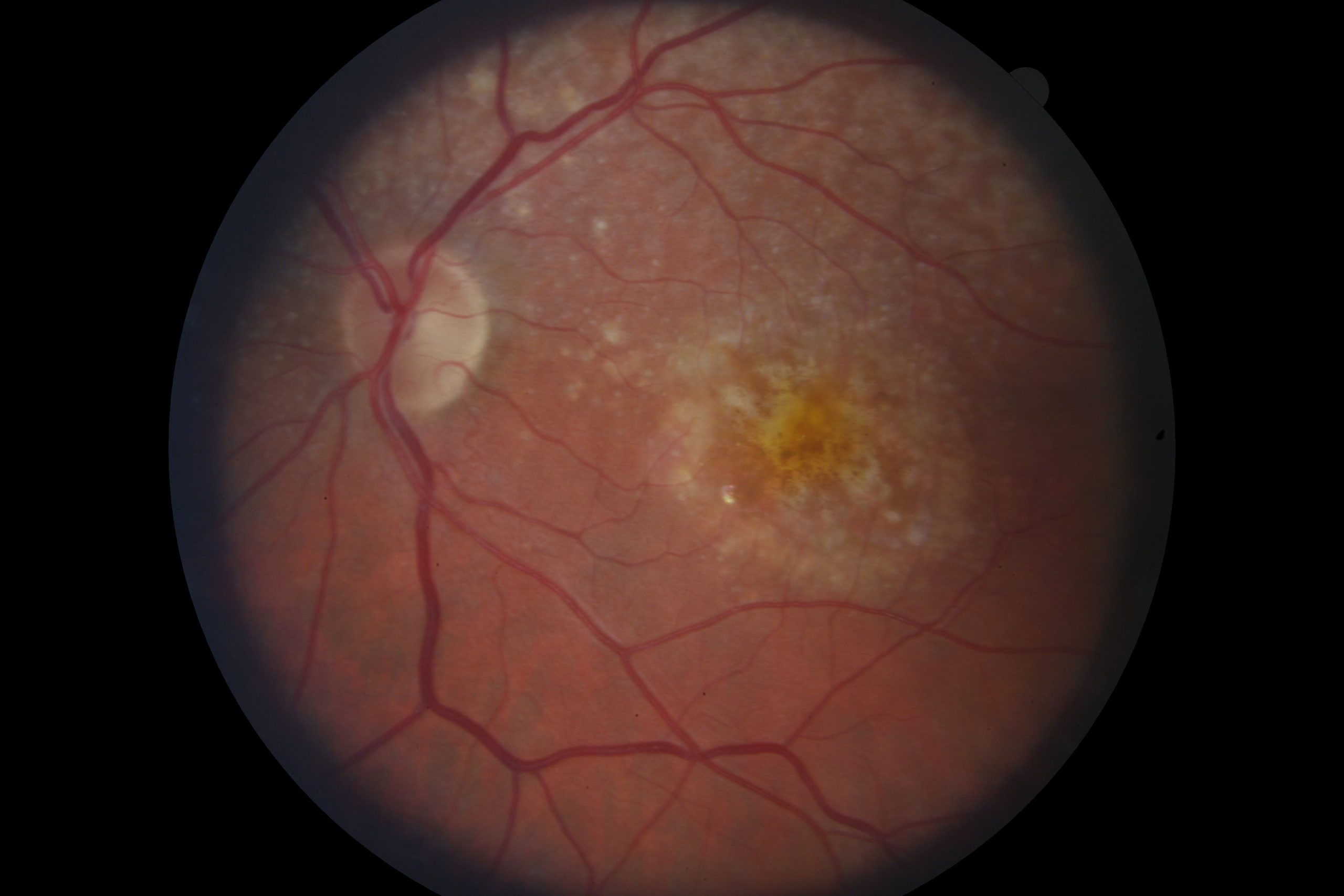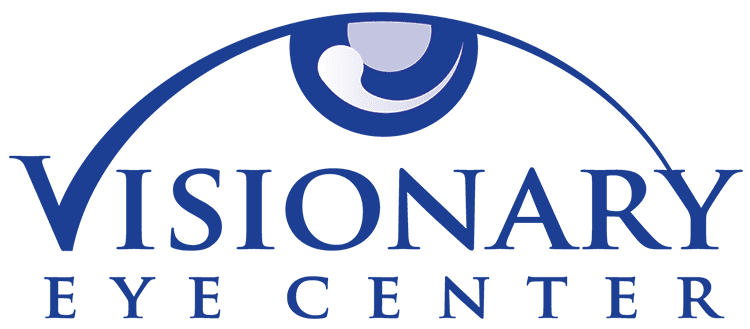Macular degeneration is the leading cause of blindness over 50 years old. It causes central vision loss ranging from wavy distortion to black spots as the macula, the part of your retina responsible for your best vision, deteriorates. We often tell our patients at the Visionary Eye Center that they will never go completely blind from macular degeneration alone, but nevertheless the condition is quite devastating to one’s independence. Risk factors for the development of macular degeneration include age (>60), smoking, race (Caucasians) and family history.
Macular degeneration is generally classified into two forms, dry and wet.
Dry Macular Degeneration
Dry macular degeneration is characterized by the development of drusen in the macula. Drusen are collections of lipids and as they build they cause distortion in the retinal contour which leads to visual distortion much like a wrinkled film would. It is unknown if macular degeneration causes the drusen to develop or if drusen formation causes macular degeneration. Dry ARMD is the most common form and typically causes the least vision loss, though in later stages the destruction can progress to a form called geographic atrophy and rival the loss typically associated with wet macular degeneration.
Treatment of macular degeneration depends on the form of the disease you have. Dry macular degeneration in moderate and advanced stages can be slowed by taking certain vitamins as demonstrated in the Age-Related Eye Disease Studies (AREDS I and II). The most recent data suggests using a vitamin with the following: 500mg vitamin C, 400 I.U. vitamin E, 25mg of zinc, 2mg of cuperic oxide (copper), 10mg of lutein and 2mg of zeaxanthin. Lutein and zeaxanthin have been shown to help patients with glare and also improve contrast. Smokers are encouraged to avoid any AREDS formulations that contain beta-carotene, as it may increase the risk of lung cancer in smokers and ex-smokers. An important note, the AREDS formulations have not been shown to prevent onset or help those in early stages of macular degeneration, so we typically only recommend starting an AREDS supplement only when you have developed macular degeneration. Reputable manufacturers of AREDS vitamins include Alcon (ICaps) and Bausch and Lomb (Ocuvite and PreserVision).

Wet Macular Degeneration
Wet macular degeneration is caused by blood vessel growth called neovascularization. These new blood vessels are leaky, causing swelling and rapid destruction of the macula. About 10% of dry macular degeneration coverts to wet. Wet macular degeneration is typically more visually devastating.
Treatment for wet macular degeneration has made great strides in the last decade. The newest treatments involve cancer drugs called anti-vascular endothelial growth factor injections (anti-VEGF). Theses injections stop the signal that causes neovascular growth to occur. This can cause regression of the already formed neovascularization, reducing visual distortion and restoring some sight. Drugs in the class vary in the frequency of dosing and cost. Macugen, Lucentis, Avastin and Eylea are examples of anti-VEGF medications used for wet macular degeneration.
An older treatment available for some is photodynamic therapy. A drug called Verteporfin is injected into the blood stream. This drug is activated by light rays of certain wavelengths which are focused on the macula causing the drug to destroy the leaky blood vessels in macular degeneration.

 775.827.1100info@visionaryeyecenter.com8175 South Virginia Street Suite B-900
775.827.1100info@visionaryeyecenter.com8175 South Virginia Street Suite B-900